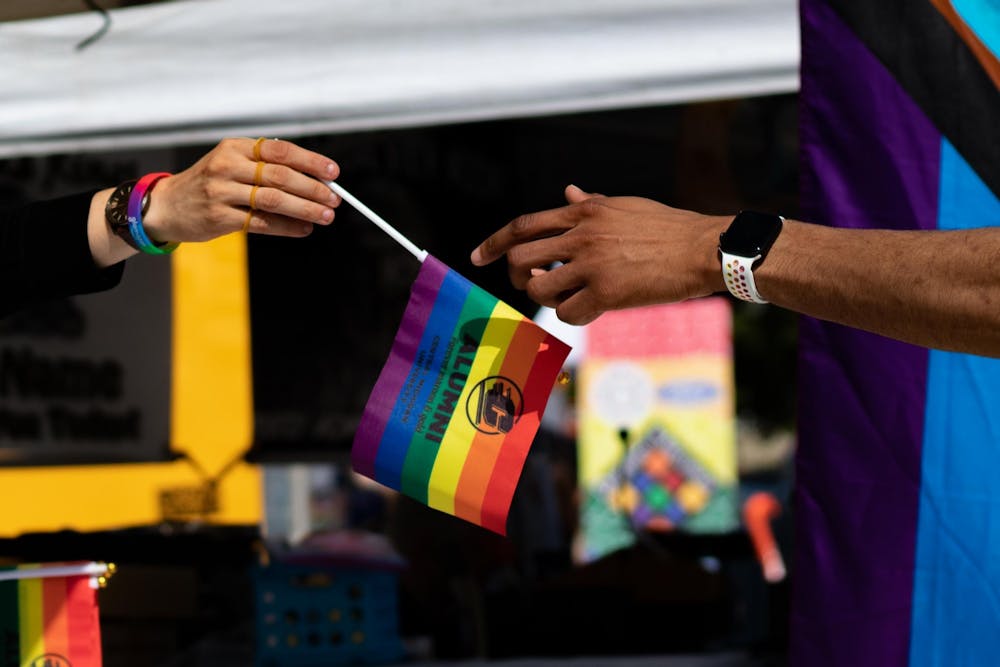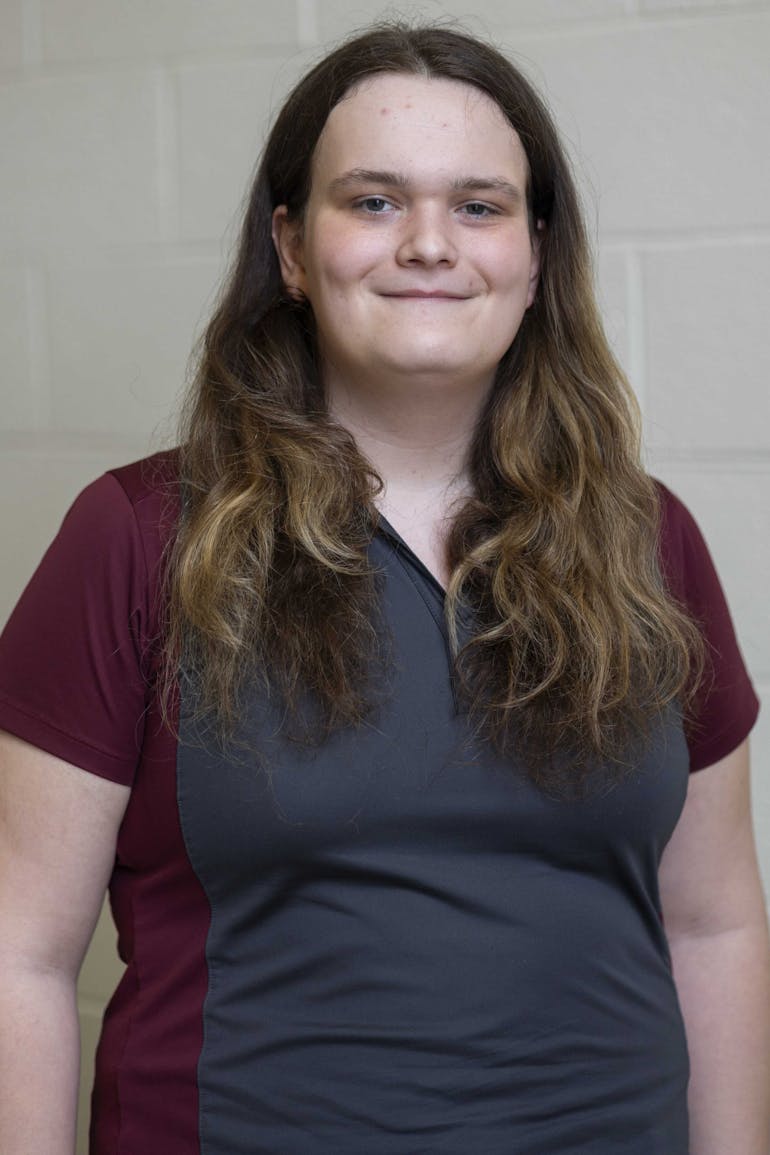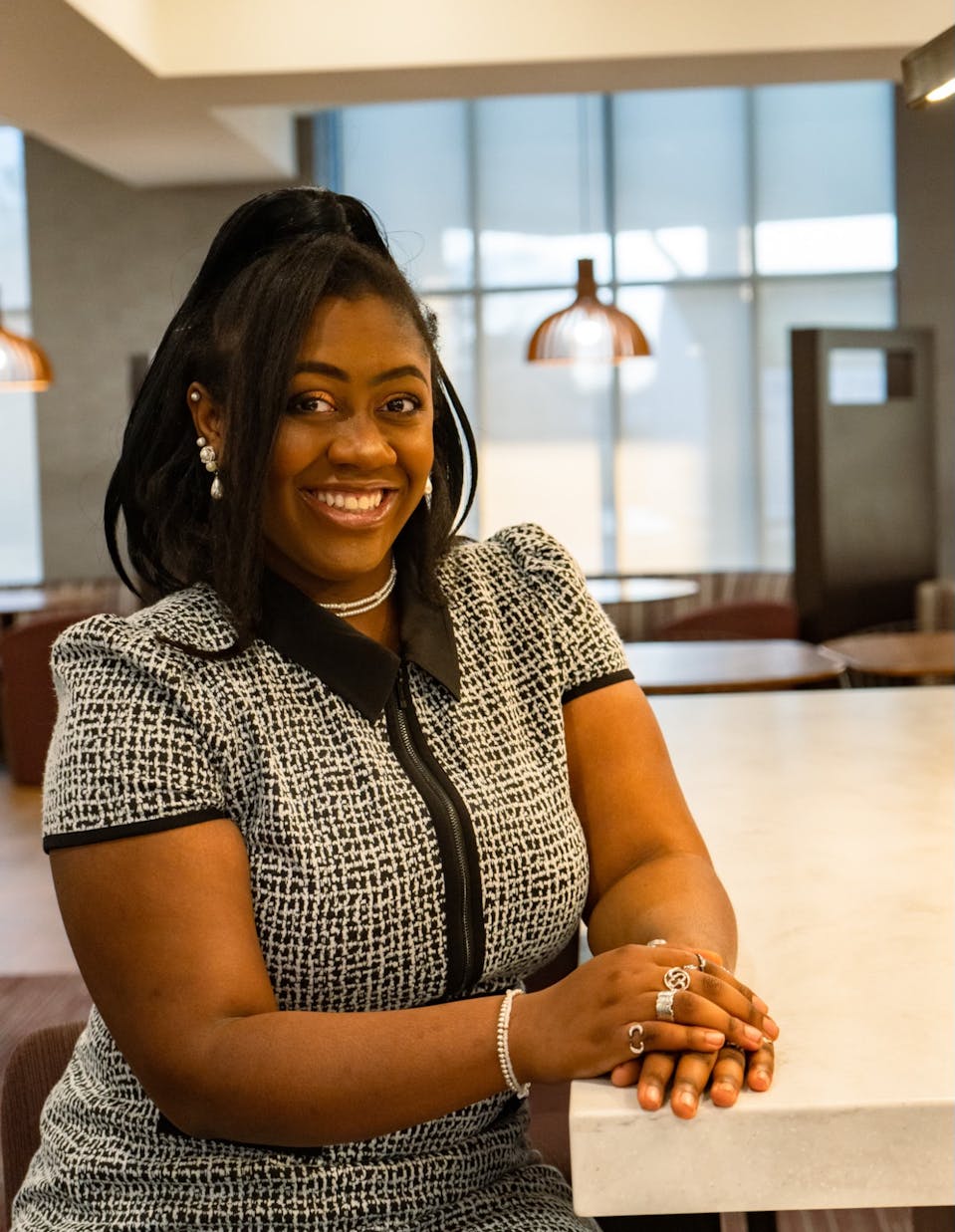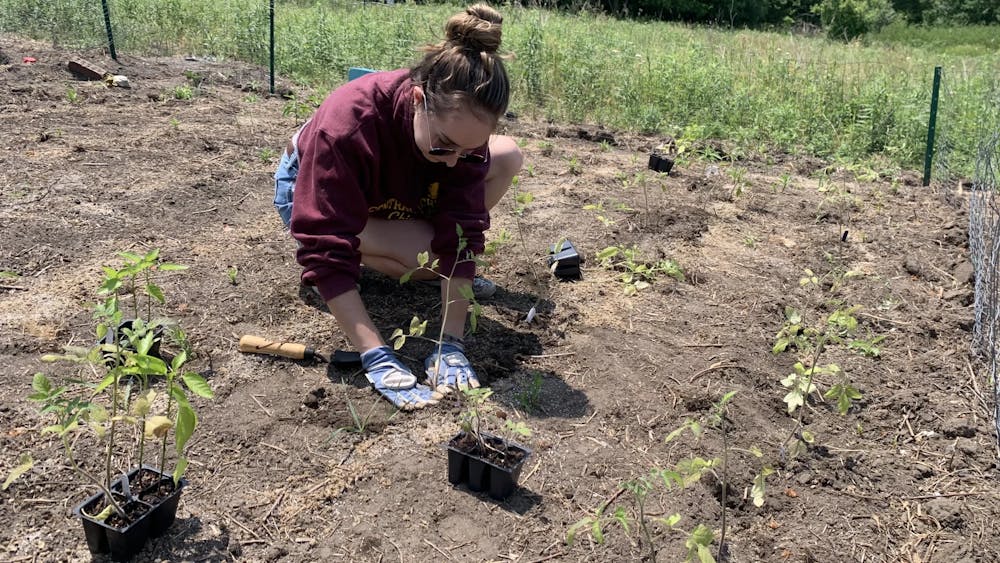Navigating women's communities through the LGBTQ+ perspective

Spectrum member Jesse Blair hands a CMU alumni pride flag to a festival goer at Motor City Pride, Sept. 18, 2021, in Detroit.
When growing up in the small town of St. Louis, Rose Stanyer, a senior at Central Michigan University who identifies as a queer bisexual woman, said she didn’t have much support.
“There were not any queer groups in my high school, there were not any pride flags hanging outside of any buildings and it was just one of those things that you just didn’t really talk about,” Stanyer said.

She said although CMU isn’t perfect, compared to her hometown, it’s nice to see established support. Stanyer said the best thing CMU did for her was connect her with a diverse crowd that shared similar experiences.
“I’ve experienced many more openly queer people in the CMU community,” Stanyer said.
For example, the Office of LGBTQ+ Services and Gender Equity Programs provides educational programs and events. It also helps to connect students with resources like on-campus counseling and student organizations like Spectrum and Transcend.
“We’re a very inclusive space, and there’s a lot of places for any individual to go,” Stanyer said.
However, some students at CMU feel differently, such as Sophia Scarnecchia, president of Spectrum.
Scarnecchia, who identifies as feminine nonbinary, grew up in Ann Arbor, which they described as a liberal and diverse area.

In high school, Scarnecchia was the vice president of the school’s queer-straight alliance, president of the Black Student Union and an active member of the feminist club.
“I grew up realizing the importance of feeling represented and the importance of overall equity that isn’t really seen throughout our society,” Scarnecchia said.
However, as a member of the LGBTQ+ community, Scarnecchia said they felt less welcome on campus compared to her hometown.
“My freshman year (2020), I definitely was more out and open about my sexuality than I am now,” Scarnecchia said. “I’ve noticed a huge uptick in homophobia and transphobia on campus, too ... It was easier to be queer then than it is to be queer now.”
Scarnecchia said one of their reasons for feeling more comfortable on campus then was due to meetings taking place online during the COVID-19 pandemic.
“If you were wanting to go to Spectrum, you could just go online,” they said. “Now when you meet they don’t have the online option, so you’re forced to go to a place in-person that is posted to the public. So technically anybody could go, even somebody who is homophobic or transphobic.”
Navigating women’s communities
On the other hand, Stanyer said she has noticed a rift in women’s communities, where many people she’s seen are more open about exploring their own sexuality and embracing intersectional identities.
Stanyer said womanhood doesn’t mean anything by itself, but instead, it’s a connected community of women struggling for equality.
“Women’s History Month, for example, is about celebrating diverse women of great accomplishments,” Stanyer said.
Scarnecchia said the purpose of Women’s History Month is to teach others and to help them become more open to listening and gaining knowledge.
“Just because you may not apply to it, doesn’t mean that it shouldn’t matter,” they said.
But, as a person of color and a member of the LGBTQ+ community, Scarnecchia said they don’t feel fully included or represented within Women’s History Month. However, they said they have started to see a change.
“There’s definitely a new wave of feminism on the horizon,” Scarnecchia said. “And I think with that is the embellishment of all sectors, not just race or sex, but sexuality, financial income and socioeconomic background.”
Stanyer said while there has been an uptick in general acceptance, it ebbs and flows.
“The other side of that is I’ve also seen an uptick in more traditionalist content in groups, just generally of people who are trying to quote like ‘return to a simpler time,’” Stanyer said.
While Stanyer said assuming that support for the LGBTQ+ community from the general public 10 years ago might have been close to 50%, she now believes it to be closer to 80% based on what she’s experienced.
“The difference now is that the 20% is a lot more energized and vocal about it,” she said.
The challenge of changing minds
“One of the biggest challenges is getting people to listen and change their minds,” Stanyer said. She said the LGBTQ+ community can’t change the minds of others who won’t listen, so instead they need to change the mind of an individual that others will listen to.
Scarnecchia said institutions such as CMU should take concerns from the LGBTQ+ community more seriously. They said that while there are resources for students on campus, it’s not enough to fully address the community’s needs or concerns.
Stanyer said people in society should push for more inclusive spaces, which can even be in your home. She said to make sure the friends and crowd you surround yourself with are a supportive community.
“The world needs more privileged people speaking out against injustice,” Stanyer said.
Stanyer said she feels people assume that since she is bisexual and dating a man, she isn’t also queer. She said people treat her sexuality like it isn’t legitimate, recognized or respected.
“That’s something I struggle with,” Stanyer said. “When you’re talking about your relationships with other people and they don’t see the full complexity and beauty of it, they only see the details that their mind can relate with.”
Jada Myrick, a student assistant for the Office of LGBTQ+ Services at CMU, who identifies as nonbinary feminine presenting, said a common struggle within the community is feeling excluded in certain areas.
“I am bisexual, and I can tend to identify with whatever partner I am at the time because it’s often the stigma that you just have to choose a side,” Myrick said.
They said no matter how you identify, it doesn’t change your sexuality.
“Surround yourself by loving and accepting people,” Myrick said. “Never water yourself down or make yourself more palatable for someone.”
Stanyer said one of the biggest strategies to help support the LGBTQ+ community is taking inclusivity with you, bringing it into the rest of the world and making it a reality.
“Allies, the best thing they can do is just fight for diversity in every arena,” Stanyer said. “Whether it’s at the Thanksgiving table, whether it’s at work, just try and be an agent of change.”
Scarnecchia said exploring gender and identity should come with the understanding that there is no deadline.
“Some people go throughout life and never even know what to call themselves or what they identify as, and that is OK,” they said. “Do what makes you happy.”



